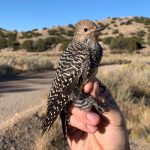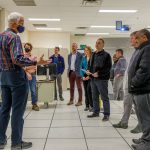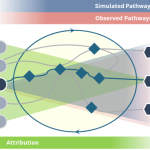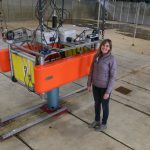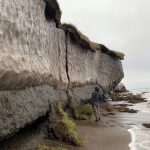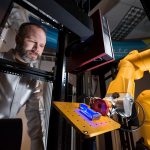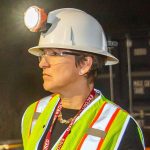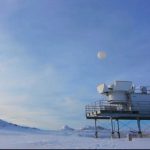Sandia celebrates Earth Day
Initiatives like Zero Waste by 2025 and the Commuter Assistance Program aim to increase sustainability at Sandia. Learn more about how Sandia is investing in the planet.
Cycloalkanes a strong candidate for reducing aviation emissions
As global demand for aviation fuel is high and expected to increase, continued use of petroleum fuel has impacts on climate change. In collaboration with Los Alamos National Laboratory, Sandia researchers pave a way to sustainable jet fuel.
DOE solar energy leaders tour National Solar Thermal Test Facility
Representatives from the DOE Solar Energy Technologies Office visited last week for the first time in two years. They learned about changes at the facility and plans for the next phase of the tower.
Climate security focus of workshop series with University of Illinois Urbana-Champaign
More than 30 people from Sandia and the university participated in a workshop on Feb. 11 focused on climate-modeling research.
Building systems engineer helps lessen climate impact of Sandia’s campuses
Robin Jones is dedicated to conservation through her work and at home. Read how it has informed her career, her contributions to climate security and her advice for educating others on the climate crisis.
Making waves to combat climate change
Meet Sandia water systems expert Kelley Ruehl and read about her unconventional path to becoming an engineer.
Atmospheric scientist uses statistical approaches to study climate impacts
Researcher Diana Bull discusses her definition of climate security, her latest project CLDERA and how to educate others about the climate crisis.
Sandia scientist to lead Minerals, Metals and Materials Society
Brad Boyce brings his experience in materials science to his three-year tenure with the society.
Women @ Energy blog features Sandia director
Amy Halloran, director of nuclear fuel cycle and grid modernization, has been recognized by the DOE in a series that honors women in STEM fields throughout the DOE complex.
Sandia-operated Arctic measurement facility moved, research to continue
Look back on eight years of collecting critical data on the North Slope of Alaska.
